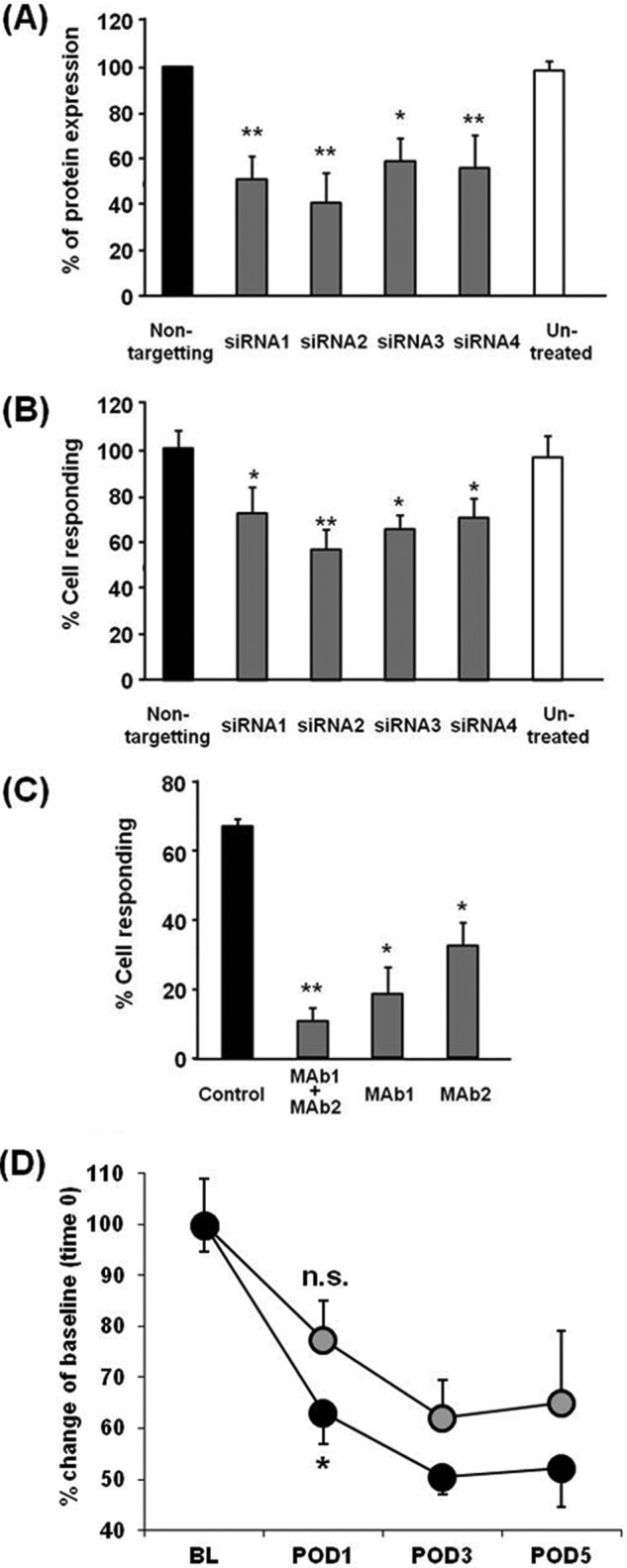FIGURE 4.

Blocking gC1qR causes attenuation of the TLQP-21-induced increase in intracellular Ca2+ levels in macrophages and mildly reverses mechanical hypersensitivity in PSNL model. A, transfection of siRNA against gC1qR (siRNA 1–4) into macrophages successfully reduced gC1qR protein expression. Nonspecific, negative control siRNA did not alter the gC1qR expression. *, p < 0.05; **, p < 0.01; one-way ANOVA, Fisher's test, n = 3. B, transfection of siRNA against gC1qR into macrophages caused significant reduction in the number of cells responding to TLQP-21. *, p < 0.05; **, p < 0.01; one-way ANOVA, Fisher's test, n = 4, a minimum of 183 cells were recorded for each experiment. C, preincubation (15 min) of macrophages with anti-gC1qR antibodies (MAb1, MAb2, 3 μg/ml each) significantly attenuates the TLQP-21-induced increase in intracellular Ca2+ levels. *, p < 0.01; **, p < 0.05; one-way ANOVA, Tukey's test, n = 3, a minimum of 80 cells were analyzed for each experiment. D, time course of paw withdrawal thresholds to von Frey mechanical stimulation on the left hind paw of PSNL model rats is shown. The left sciatic nerve was tied with silk thread and wrapped loosely with a cellulose membrane previously soaked in PBS containing either 25 μg of anti-gC1qR (MAb1, gray circles) or control antibody (black circles). The animals treated with control antibody showed a reduction of mechanical threshold 24 h after PSNL (POD1; *, p < 0.001 versus base line (BL)). The rats treated with gC1qR antibody, in contrast, showed a higher mechanical threshold compared with control antibody-treated rats, and their mechanical threshold 24 h after PSNL was statistically not different from the base line (POD1; n.s., not significant; p = 0.12 versus base line; ANOVA, Tukey's test, n = 9, 3, or 4 rats were used for each experiment).
